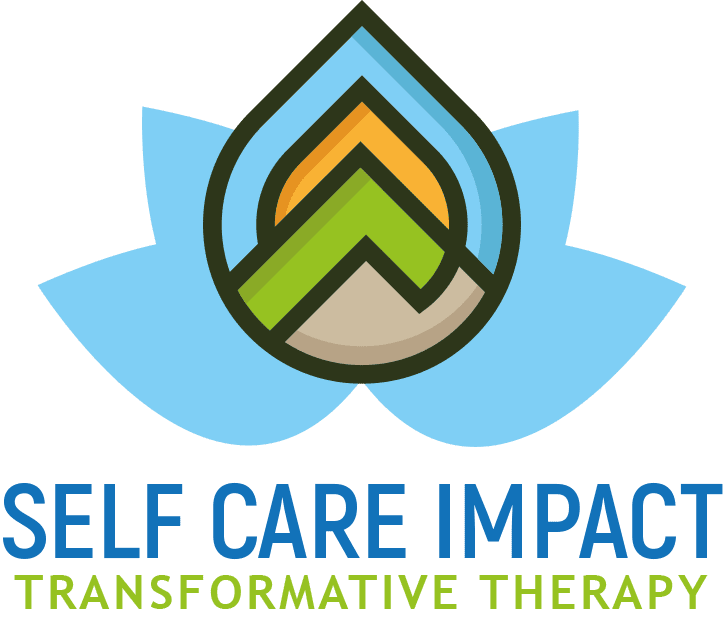Family is the bedrock upon which many of our personal narratives are built. Yet, for many, the family of origin – the family one grows up in – may be marked by dysfunction. Such families can have patterns of behavior that inhibit emotional growth, self-worth, and the ability to form healthy relationships outside the family. Addressing these issues and breaking the cycle of dysfunction is essential for personal growth and well-being.
While there isn’t a one-size-fits-all playbook for dealing with family dysfunction, given the myriad of unique family dynamics and issues, there are widely accepted guidelines and strategies that can be helpful. Here’s the TLDR:
- Acknowledge that your family was dysfunctional. Some dysfunction is normal but how bad was yours?
- Understand your dysfunction – take a look at the list below.
- Educate Yourself
- Set Boundaries and Take Action. Action might involve talking, seeking help, estrangement, or just staying safe.
While this “playbook” provides a broad overview, it’s crucial to remember that every family is unique. Approaches might need to be tailored to specific situations and dynamics. Seeking professional guidance can help tailor these strategies to your specific family’s needs.
What Type of Family of Origin Dysfunction Do You Have?
Family dysfunction (or Family of Origin Dysfunction) refers to problematic patterns, behaviors, or dynamics within the family one grows up in. Dysfunctional families may manifest various issues, including (but not limited to) abuse (physical, emotional, sexual), neglect, substance misuse, or untreated mental illness. The dysfunction can be obvious, as in cases of overt abuse, or more subtle, as in emotional neglect. Family of origin dysfunction can encompass a wide range of behaviors and patterns, and its effects can last long into adulthood. By understanding where the dysfunction originates, you can start to decide what to do and how to heal.
While this is not an exhaustive list, here are some of the main types of family dysfunction:
Enmeshment: Enmeshed families have blurred or non-existent boundaries between members. This excessive closeness can hinder the development of individual identities and promote over-dependency.
Disengagement: The opposite of enmeshment, disengaged families are characterized by excessive distance, emotional detachment, or indifference between members. Relationships within the family unit are weak, and members often feel isolated or unsupported.
Triangulation: This occurs when two family members, instead of communicating directly with each other, involve a third member (often a child) as a messenger or buffer. This can place undue stress on the third party and impede direct and healthy communication.
Scapegoating: One family member is unfairly blamed for the family’s problems. This individual often bears the brunt of criticism, punishment, or negative attention, which can severely impact their self-esteem and mental health.
Role Reversal: Children, instead of being cared for by their parents, are placed in roles where they take care of their parents, emotionally, financially, or otherwise. This “parentified” child misses out on a typical childhood and often shoulders responsibilities beyond their age.
Substance Abuse: Families where one or more members struggle with substance abuse often face challenges like neglect, erratic behavior, financial instability, and emotional or physical abuse.
Denial: In some dysfunctional families, problems are not acknowledged. Family members refuse to recognize or confront issues, resulting in a lack of resolution and continued dysfunction.
Abuse: This can be physical, emotional, sexual, or a combination. Abusive family environments are harmful and can have long-lasting psychological effects on victims.
Control and Authoritarianism: Families dominated by a controlling figure, where there is a strict hierarchy and little room for individual expression or autonomy, can be stifling and repressive.
Unresolved Conflict: Continuous disagreements, passive-aggressiveness, or hostilities without resolution can create a persistent tension in the family environment.
Financial Stress and Instability: Chronic financial problems, often combined with poor financial management or communication, can result in stress and strain within the family.
You might recognize several of these because families can experience more than one type of dysfunction simultaneously. Keep in mind that the presence of dysfunction doesn’t mean there aren’t positive aspects or some happy memories within your family. Nonetheless, understanding and addressing these dysfunctional patterns will help you.
The Family of Origin Dysfunction Playbook
1. Understand Your Family Dysfunction
Pick one or more things from the list above and think about how and why this is happening. Understanding your family’s dysfunction is a process of self-awareness, observation, reflection, and often requires external assistance. Begin by acknowledging and naming the emotions and patterns you observe within yourself. How do you feel when you interact with your family members? What triggers strong emotional responses in you?
Sometimes, patterns of dysfunction can span generations. Talk to older family members or review family stories and histories. This can provide context for present-day dynamics. If it’s safe to do so, initiate conversations with family members about the dynamics you’ve observed. They may offer a different perspective, provide more context, or validate your feelings.
Strangely enough it may be easier for you to avoid blame. Families are complex systems, and while some members may be more responsible for certain dynamics, spending the mental energy on blaming people can distract you from understanding and healing.
If you can’t change it, then accept that. There may be aspects of the dysfunction that you can’t change, especially if family members aren’t willing to recognize or address the issues. Focus on what you can control—your reactions, your boundaries, and your own personal growth. Also choose your battles -Not every issue is worth addressing, especially if it might exacerbate tensions. Determine which issues are essential for your well-being and which ones can be set aside.
2. Establish Boundaries and Limit Exposure
Boundaries are a critical tool for managing relationships with dysfunctional family members. Determine what you’re willing to tolerate and what you aren’t. Clearly communicate these boundaries and enforce them consistently. Remember, it’s okay to prioritize your well-being.
It’s okay to limit your interactions with family members who consistently harm or belittle you. You can choose to reduce visits, limit phone conversations, or even take a break from certain relationships. Be specific about what you need. For example, instead of saying, “I need space,” you might say, “I’ll visit once a month,” or “I’d prefer if we spoke on the phone weekly instead of daily.”
When discussing your boundaries, be clear, direct, and assertive. Use “I” statements to express your feelings and needs without blaming or shaming the other person. For instance, “I feel overwhelmed when we talk every day, so I’d like to limit our calls to once a week.” Dysfunctional family members might not understand or respect your boundaries initially. They may feel rejected or become defensive. Be prepared for potential backlash or attempts to guilt-trip you.
Make it clear what the consequences will be if your boundaries are not respected. For example, “If you continue to bring up that topic after I’ve asked you not to, I’ll need to end our conversation.”
3. Consider Estrangement
Estrangement is a common choice for people but it is also a deeply personal and complex decision. It’s essential to weigh various factors, consider potential consequences, and consult appropriate resources before making such a decision. Here are some considerations to keep in mind:
- Severity of Dysfunction: All families have challenges, but not all require estrangement. Reflect on the severity of your family’s dysfunction and the impact it has on your well-being. Situations involving abuse, harm, or a direct threat to your safety are more pressing than other types of dysfunction.
- Potential for Change: Consider if there’s a possibility for the relationship or situation to improve. Have you tried therapy, setting boundaries, or having open conversations with family members about the issues?
- Your Well-being: Your mental, emotional, physical, and financial well-being should be a priority. If staying connected to your family is causing significant harm, estrangement might be a valid consideration.
- Consequences of Estrangement: Consider the potential consequences. Estrangement can provide relief from toxicity, but it can also come with feelings of guilt, grief, or loss. Think about how this decision might impact your relationship with other family members or your connection to family events and traditions.Think about your future, will you have regrets?
- Temporary vs. Permanent Estrangement: Remember that estrangement doesn’t have to be permanent. Some people find value in taking a break from their family to heal, reflect, and grow. Later, they may choose to reconnect under different terms.
Estrangement is a significant decision that should be approached with careful thought and, ideally, with guidance from professionals or support groups. Whatever you decide, prioritize your well-being and remember that it’s okay to change your mind or re-evaluate your choice as circumstances or feelings shift.
4. Create Your New Chosen Family
Creating a chosen family from friends and like-minded individuals can be a profoundly healing and empowering experience, especially if you’re estranged from your biological family. Here’s a guide to help you form and nurture a “family of choice”:
First and foremost, understand that relationships born out of mutual respect, love, and shared values can be just as strong, if not stronger, than biological ties. Your chosen family may become quite valuable to you. Think about starting with existing friends. Which of them have consistently shown understanding, support, and trustworthiness.
You can also seek out new friends. Join clubs, organizations, or groups that align with your interests, hobbies, or values. Whether it’s a book club, yoga class, or a community service group, shared activities can forge strong bonds. Don’t try to move too fast, remember that trust is built over time. As you get to know someone, gauge how safe you feel sharing personal stories and gradually deepen the connection.
5. Consider Future Generations
If you’re a parent or plan to become one, recognize the patterns of dysfunction you might unintentionally perpetuate. Strive to break the cycle and provide a healthier environment for the next generation. By choosing to step away from dysfunction, individuals can break patterns of behavior that have been passed down through generations. This creates an opportunity to adopt healthier behaviors and interactions, which can then be passed on to the next generation.
Try modeling healthy boundaries with your chosen friends and family. When they see a family member prioritize their mental and emotional health through estrangement, they receive a powerful message about self-worth and self-preservation.
You might be concerned that estrangement means that you won’t have a “Real” family. Estrangement often forces individuals to seek and cultivate relationships based on trust, mutual respect, and genuine connection, rather than obligation. This can teach future generations to value and seek out authentic relationships. You want your kids to know that they have agency in their lives. They can choose which relationships to nurture and which to walk away from. While estrangement can be a challenging and painful decision, its impact can reverberate positively through future generations.
Help in Lakewood and Longmont
Dealing with family of origin dysfunction is undoubtedly challenging. However, with the right resources, support, and determination, it’s possible to heal and grow beyond the limitations of one’s upbringing. Remember, while we can’t choose the families we come from, we can choose how we respond and the life paths we forge.
Let’s figure out how to help you. Please contact our Client Care Coordinator for your complimentary 20-minute phone consultation today and read more about our services on the front page of our website.
Self Care Impact Counseling envisions a new age of counseling for adolescents, adults, couples & groups that makes a REAL difference with core values of GROWTH | BALANCE | COMPASSION | INNER HARMONY.

